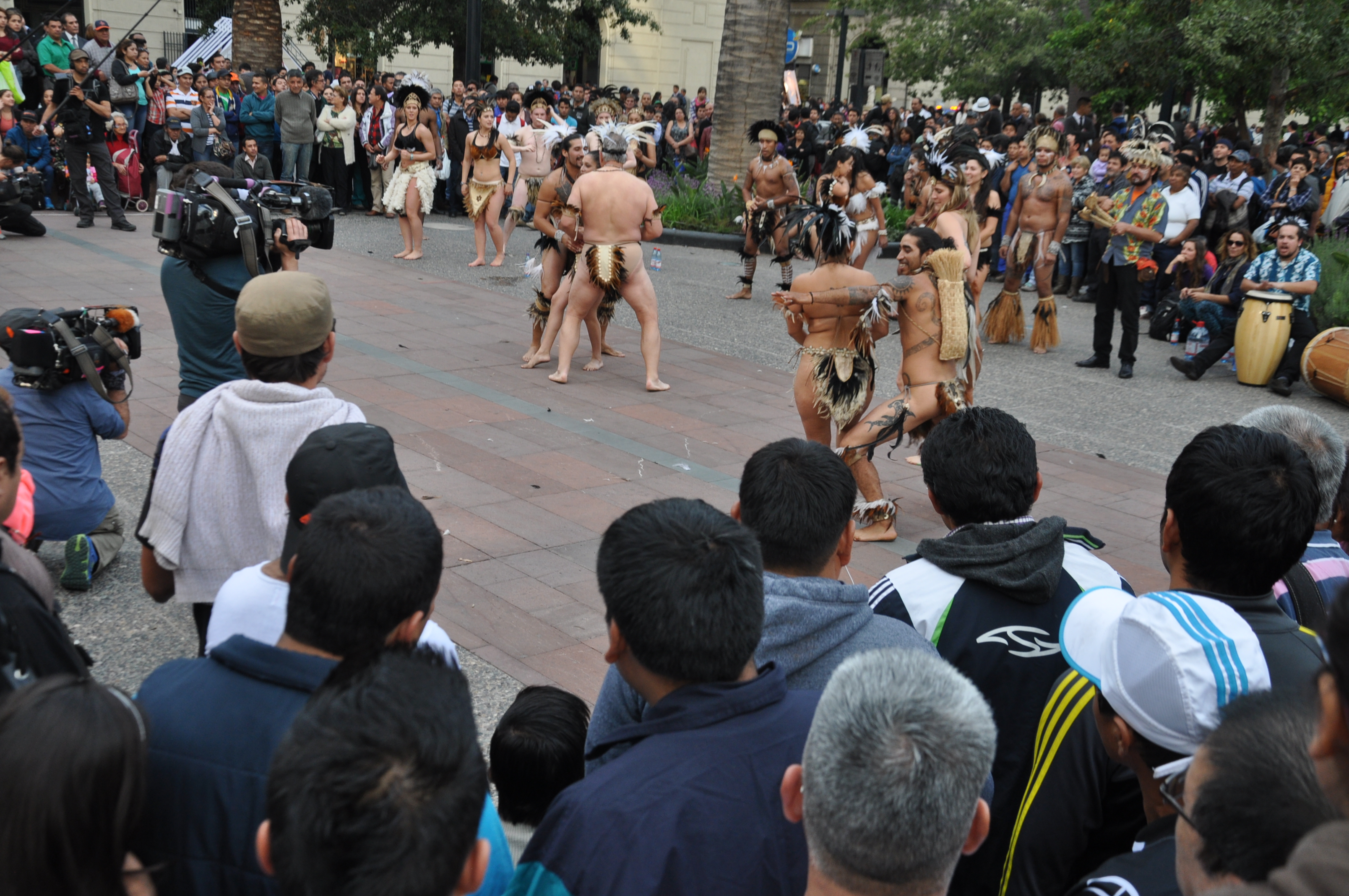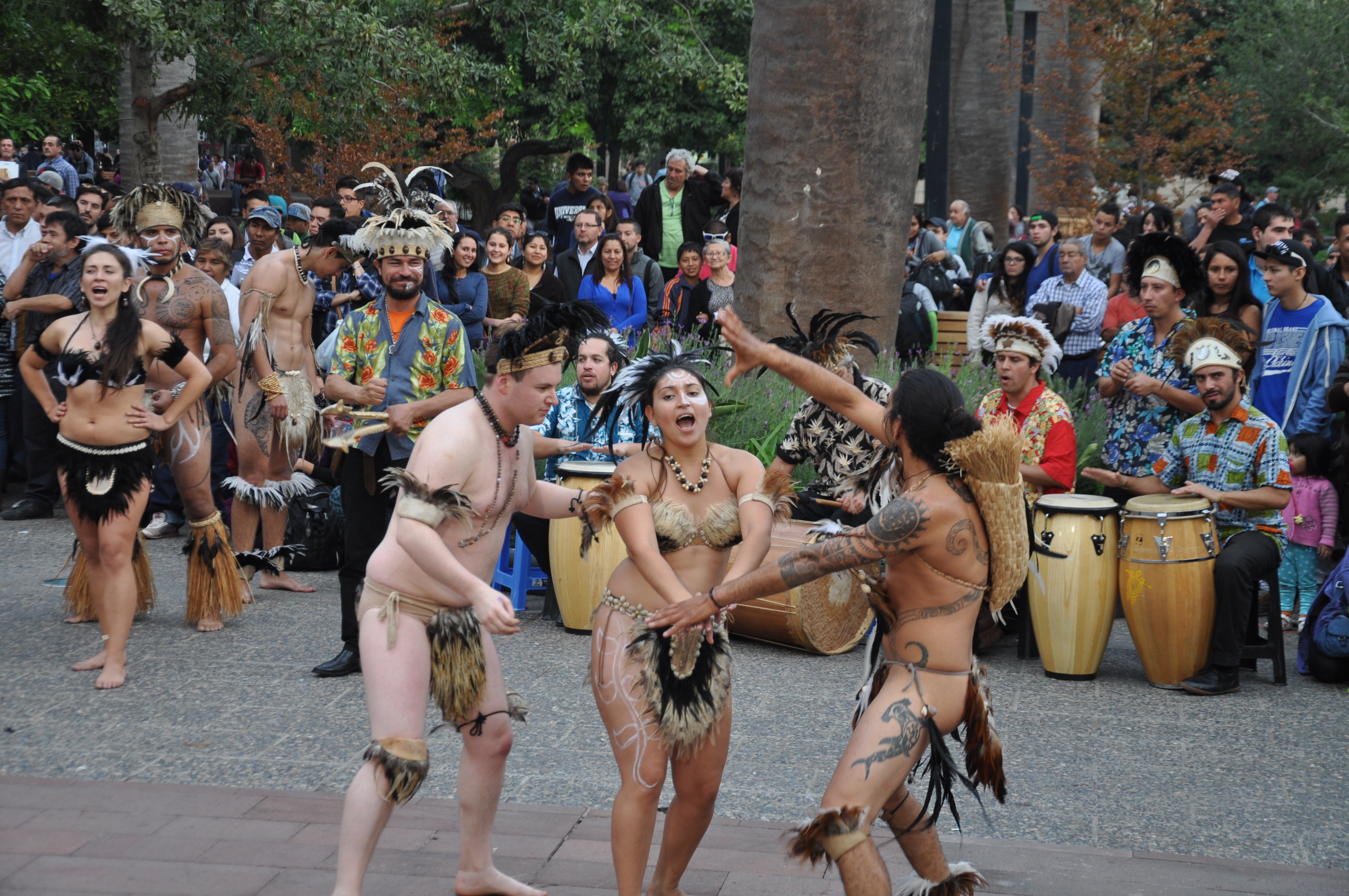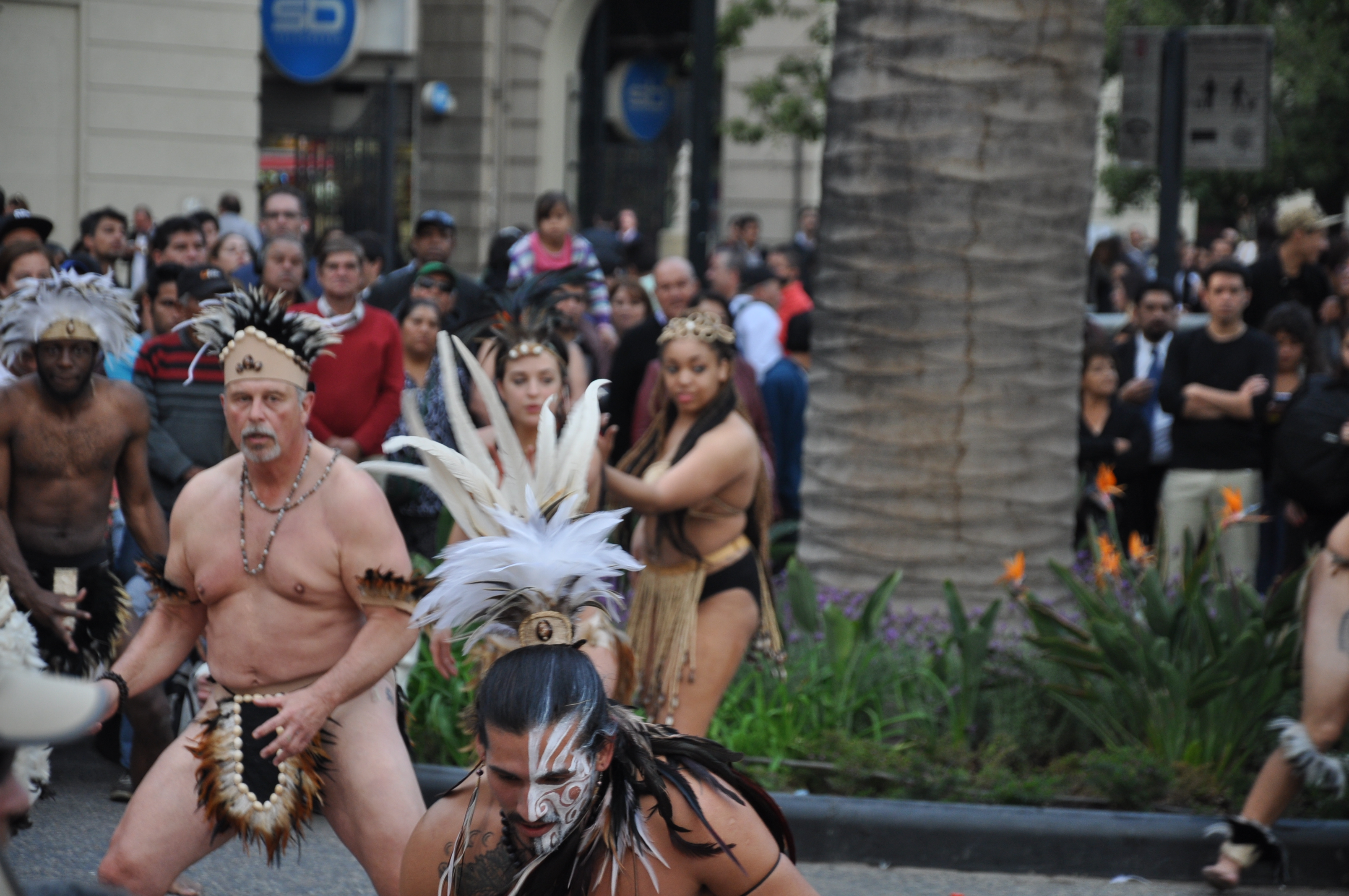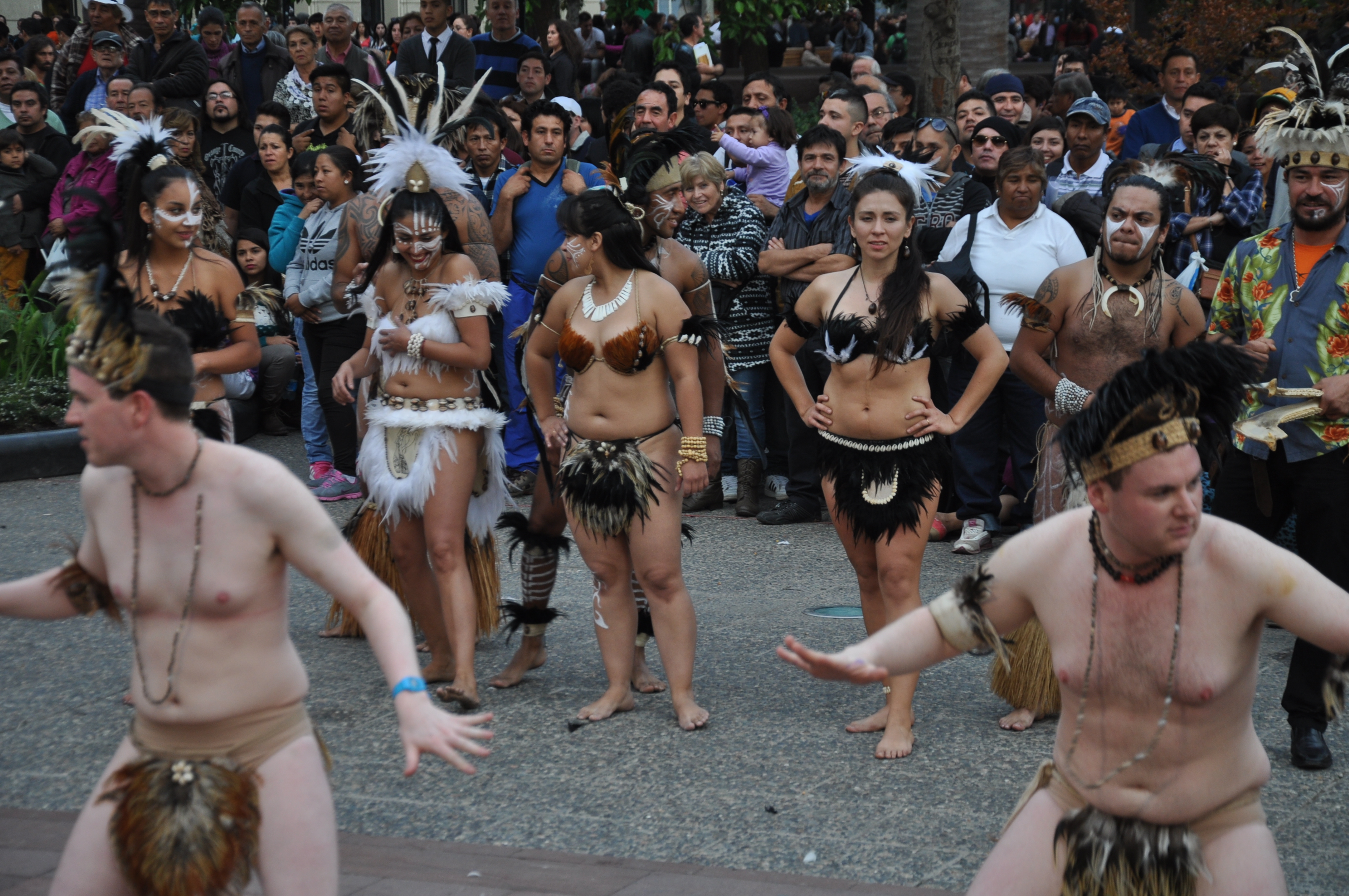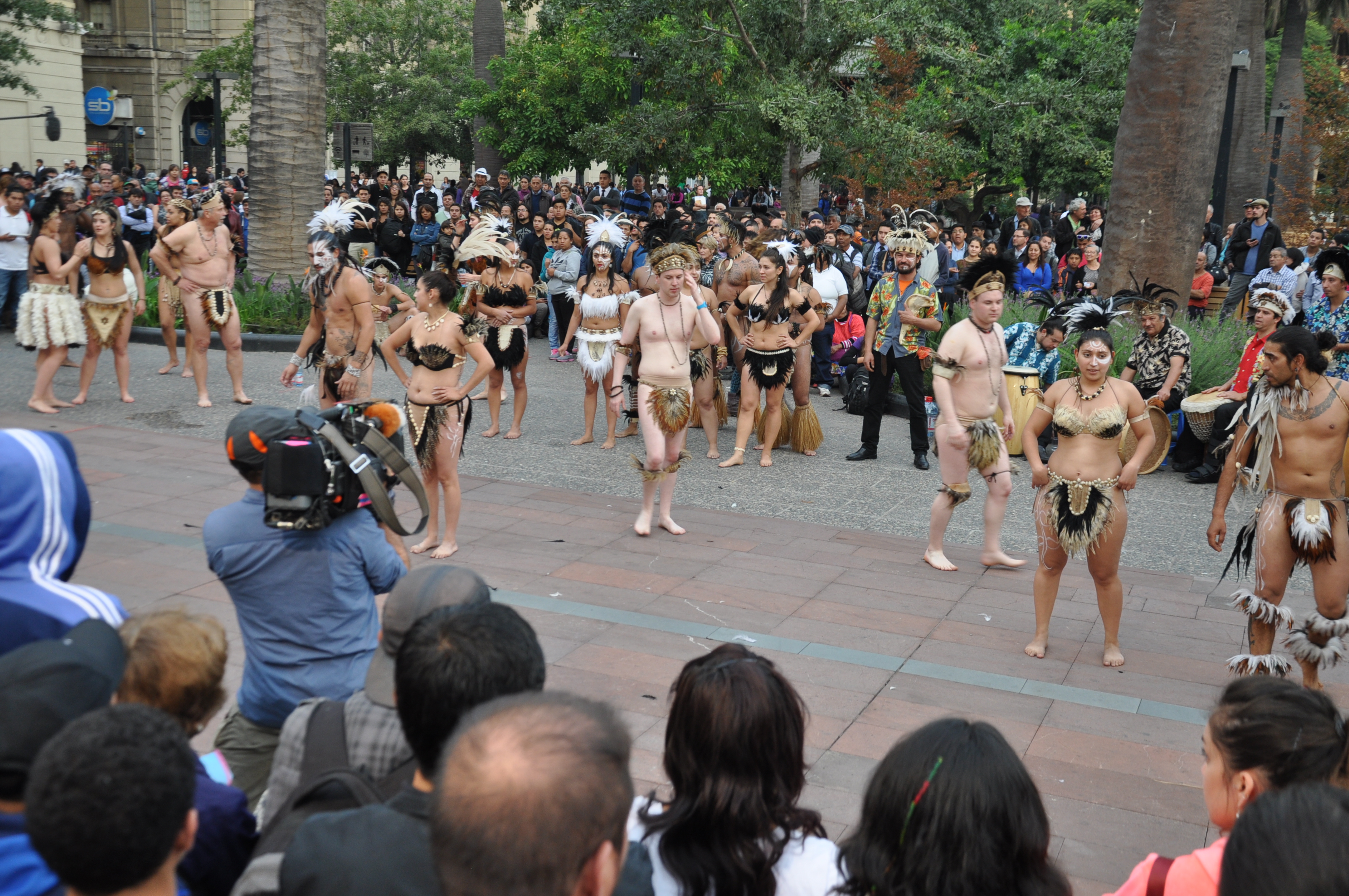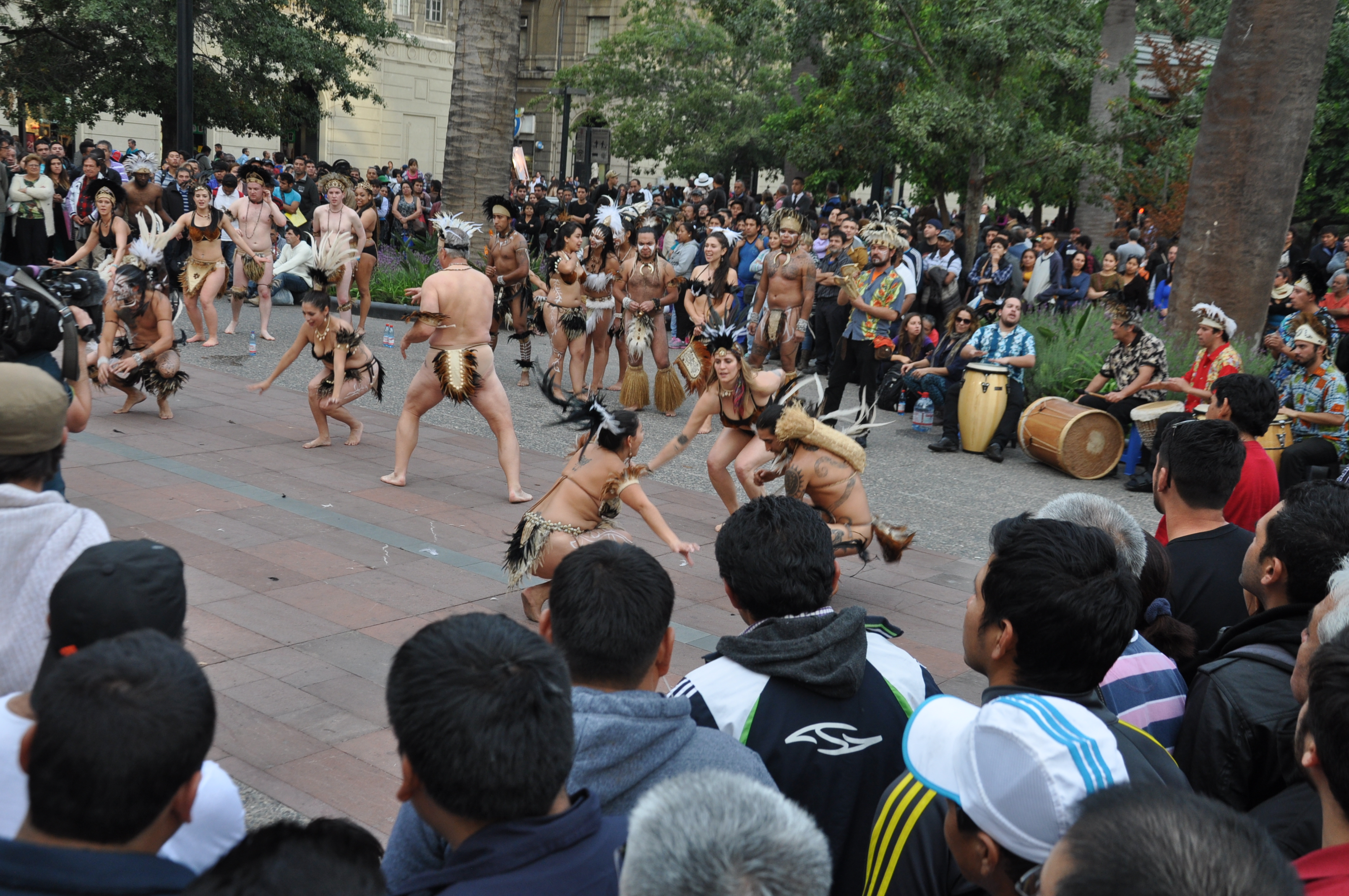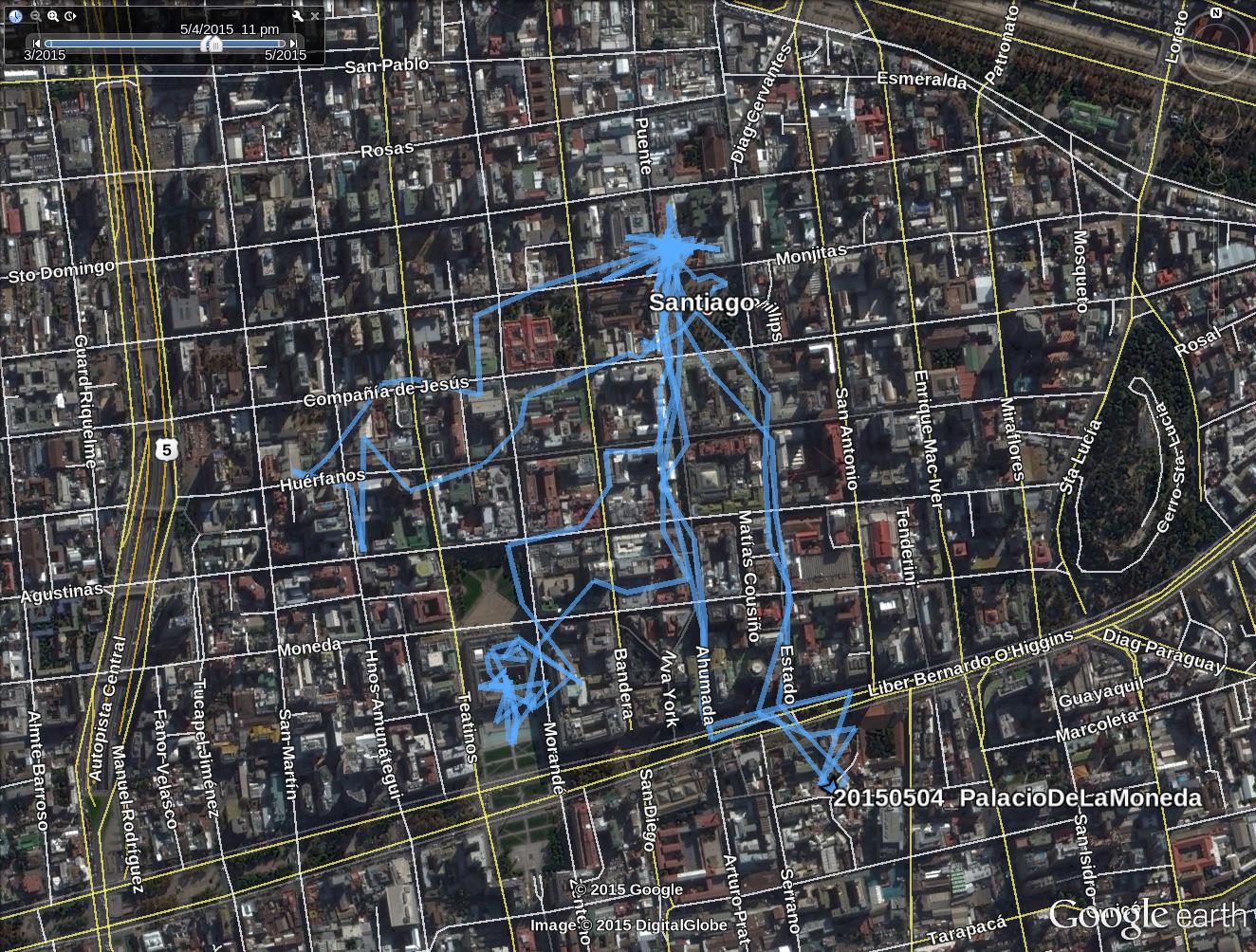Planing
The morning, I spend blogging and searching for a flight to Lima. All affordable flights were sold. I found a a solution however: I would book a flight to Arica at the northern border of Chile, then cross the border by train, and continue on to Lima from Tacna by plane.
The Parcel
Then I went to the post office trying to find out why my package that I had sent back home 2 weeks earlier did not leave Santiago. This became a lengthy operation, and I would need 3 more visits over the next 2 days to have it resolved. The root cause for the package not being further processed was a mobile phone. I had forgotten it in a vest that I had put into the parcel. The post service does not transport mobile phones because of the inherent danger of their lithium batteries to explode.
Palacio de la Moneda
In the afternoon, I visited Palacio de la Moneda (or La Moneda), the seat of the president of Chile. The tour did not start right away, and I had an enjoyable small talk with the Carabinieri guards (happy about some change to their dull routine) in broken English, and broken Spanish. The girls were a little bit timid however, and vanished pretty quickly into the back of the building.
The building was designed by the Italian architect Joaquín Toesca. Its construction took place between 1784 and 1812. As the name suggests, it housed the Chilean mint from 1814 to 1929, before it became the seat of the president in 1845 during the term of Manuel Bulnes. Until 1958, the president and his family would also live there.
On September 11th 1973, it became the focal point of the military coup d’etat as president Salvador Allende barricaded the building, and its north face was destructed by air raids of the Chilean air force. Salvador Allende refusing to resign choose to commit suicide in hist office in the 2nd floor of the building.
Augusto Pinochet, the military dictator reigning Chile until 1990 with an iron fist, apparently feared the same fate. During restorations taking place between 1973 and 1980, he had a underground office complex under the front square constructed that would have allowed him to escape safely in case of attack.
The door at Morande 80 was introduced by president Pedro Montt in 1906 which allowed him and as family to enter and leave the palace skipping the protocol at the main gate. On direct orders of dictator Augusto Pinochet the door was sealed in the 1970s. Maybe he feared its symbolism, as the body of Salvador Allende was taken out of the palace through this door. With the restoration of democracy, President Ricardo Lagos (2000-2006) had the door reopened on September 11th 2003, not only in commemoration of the military coup d’etat exactly 30 years earlier, but also as a symbol of the president being an ordinary citizen who enters and leaves the building without protocol.
The palace is relatively small, and despite the security patrols comparatively easily accessible. It is embedded in the town centre. Also the cultural centre under the southern front plaza creates a constant stream of people visiting it. Maybe this can serve as symbol for a modern, and democratic Chile with an open society in that everybody can pursue a life without oppression.
After visiting the palacio, it was time for another visit at the post office. At the square in front of it, there was a group showing dances of indigenous people — remarkably, not all of the dancers seemed to have indigenous roots. I attended and enjoyed the show and sound of the drums for a while.
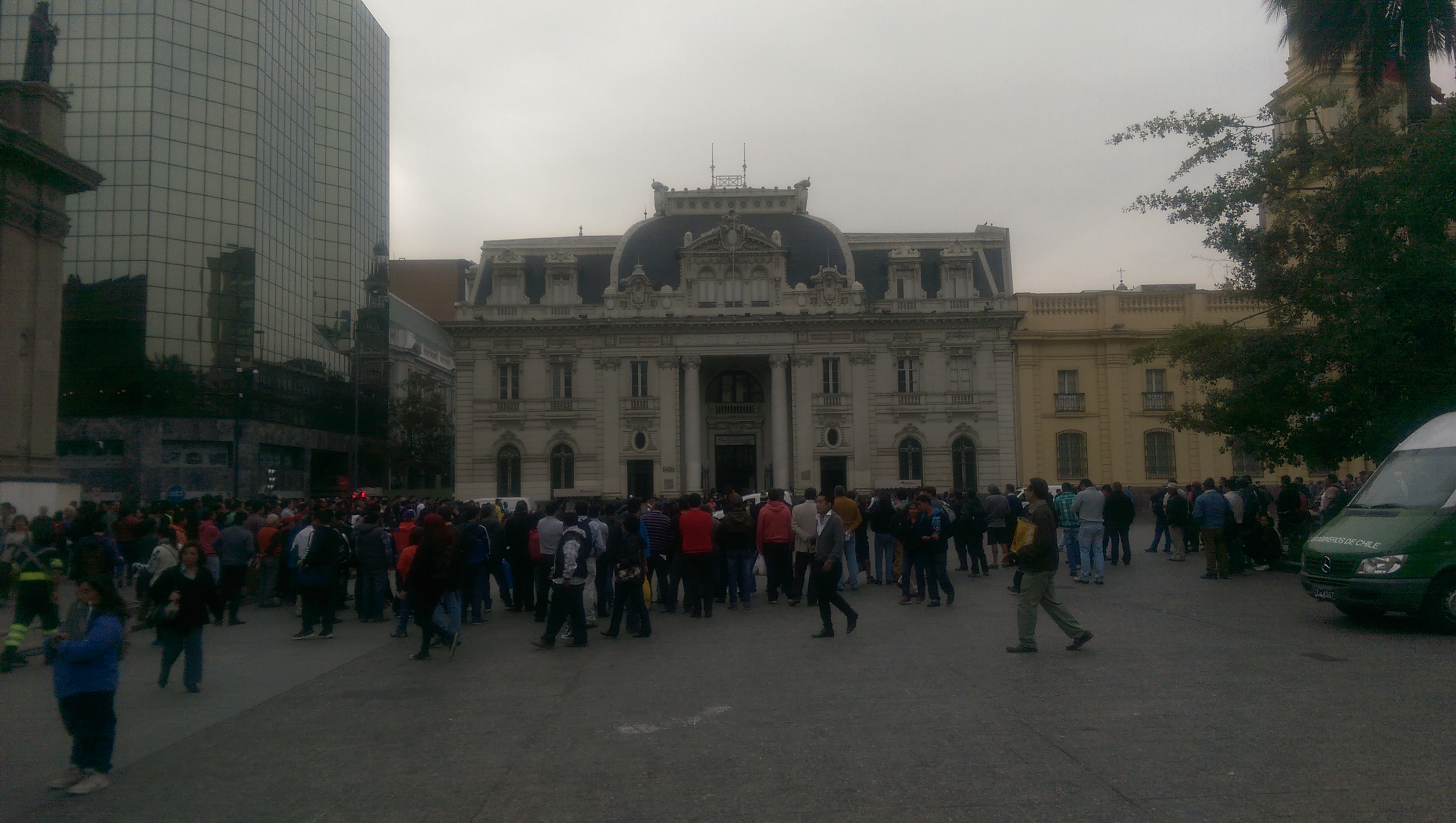
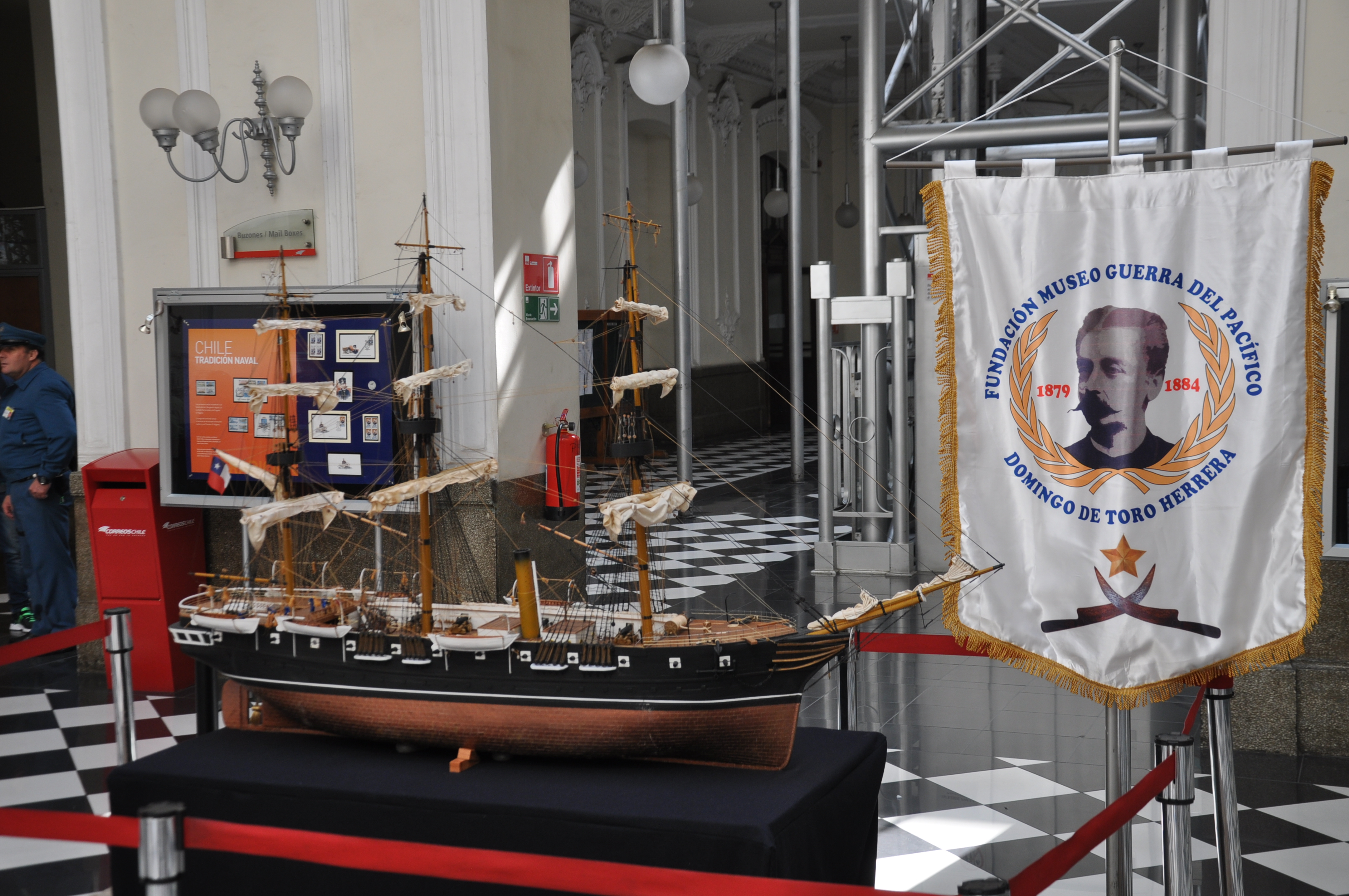
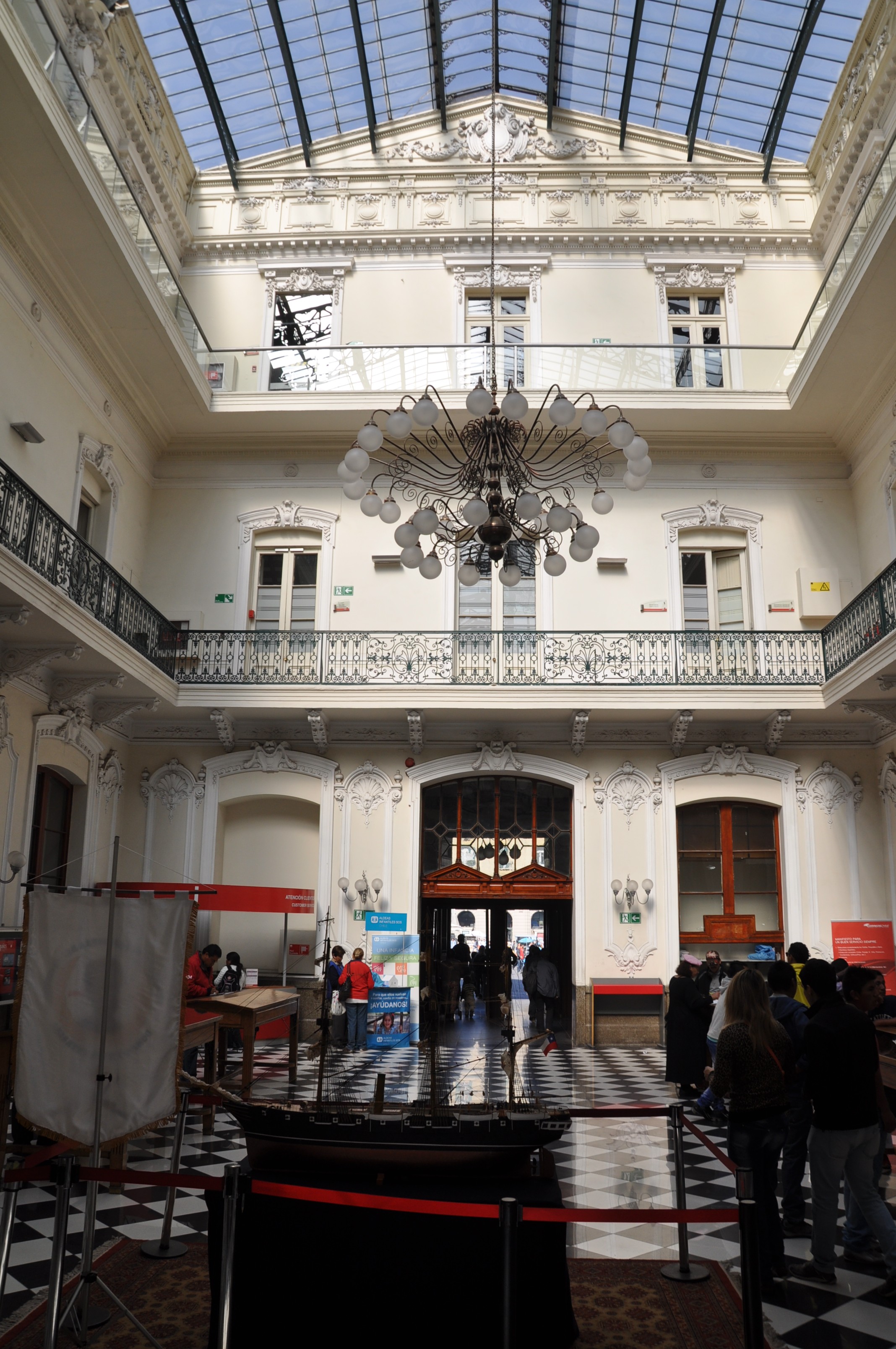
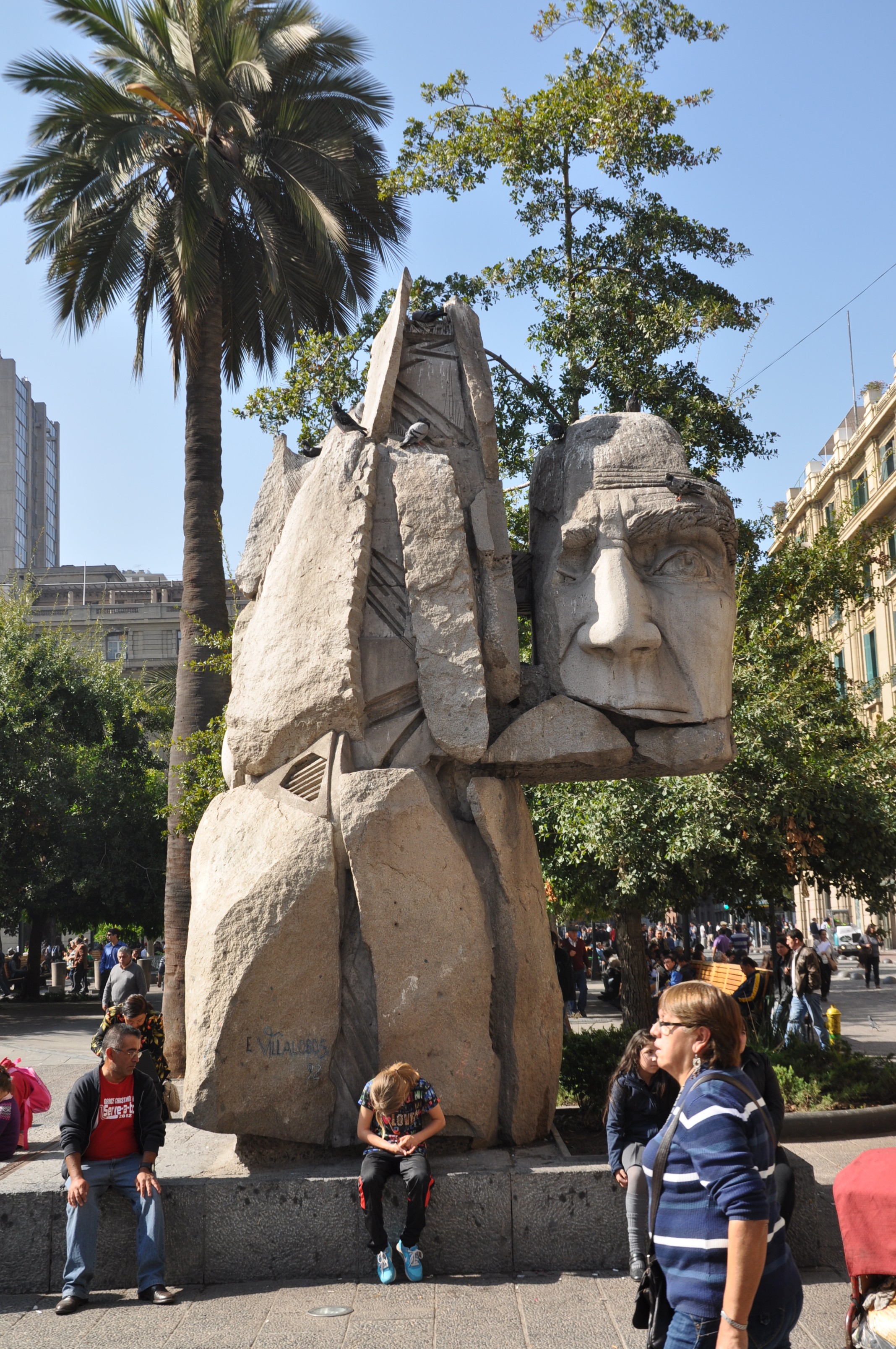
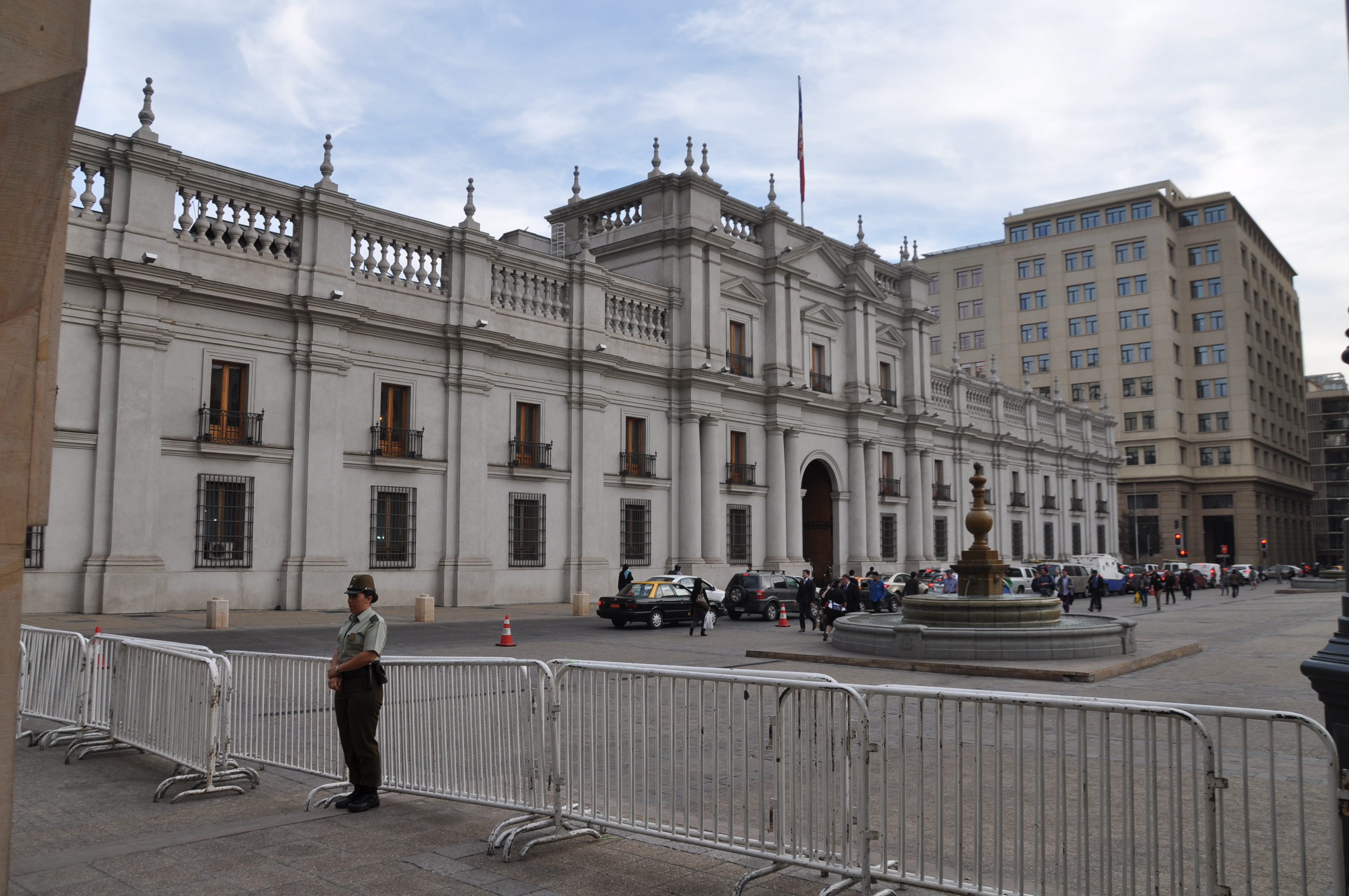
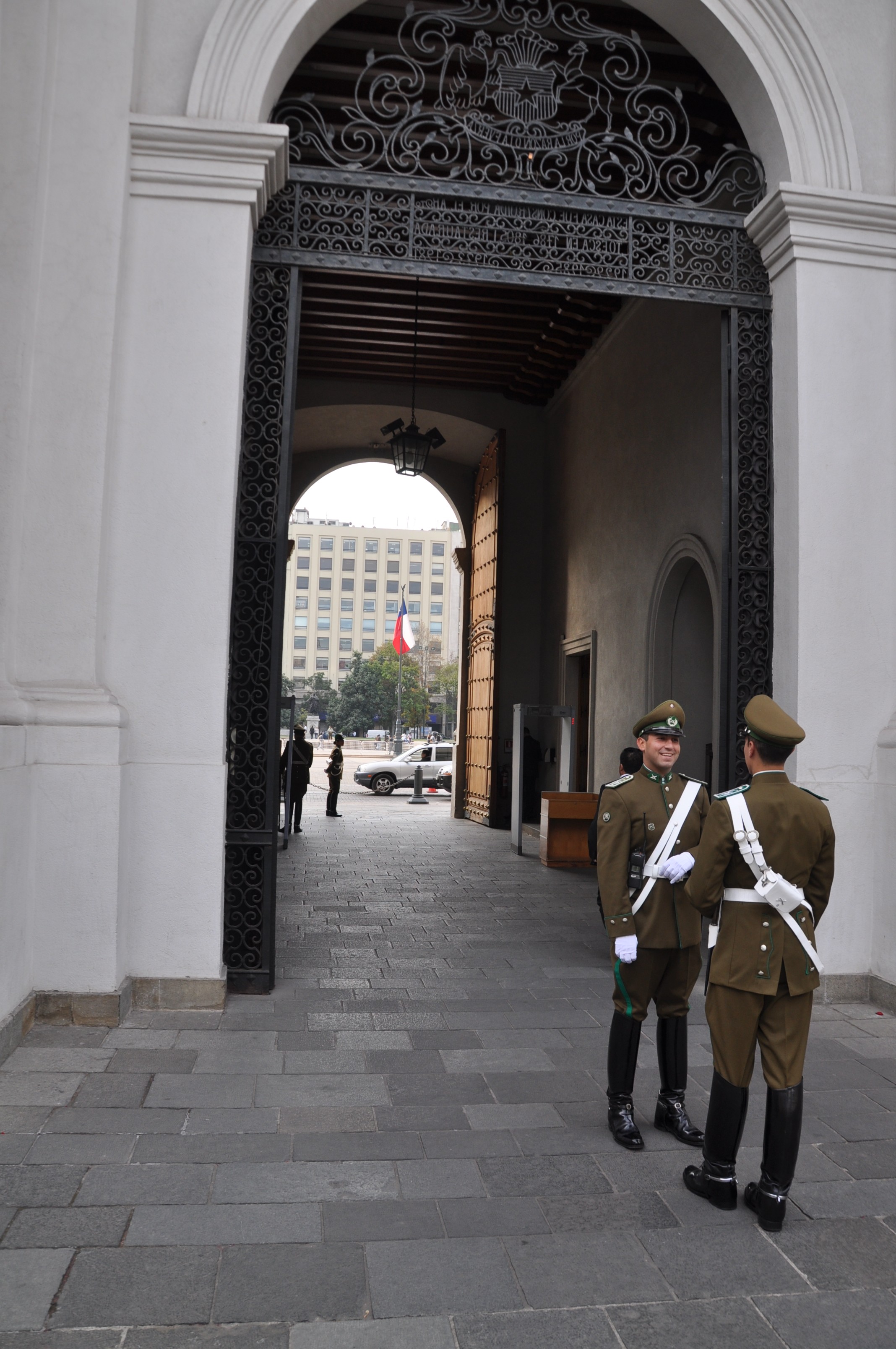
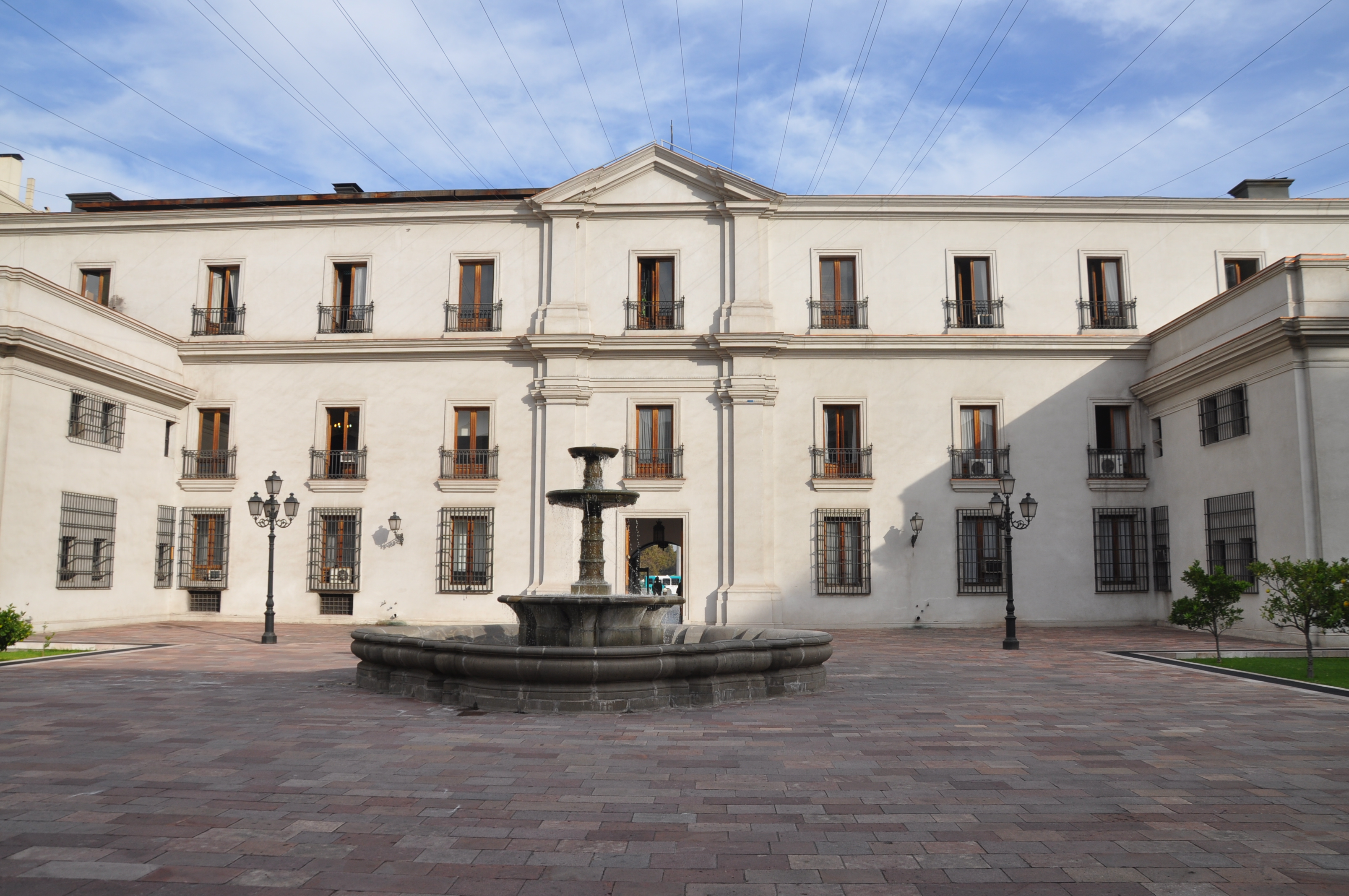
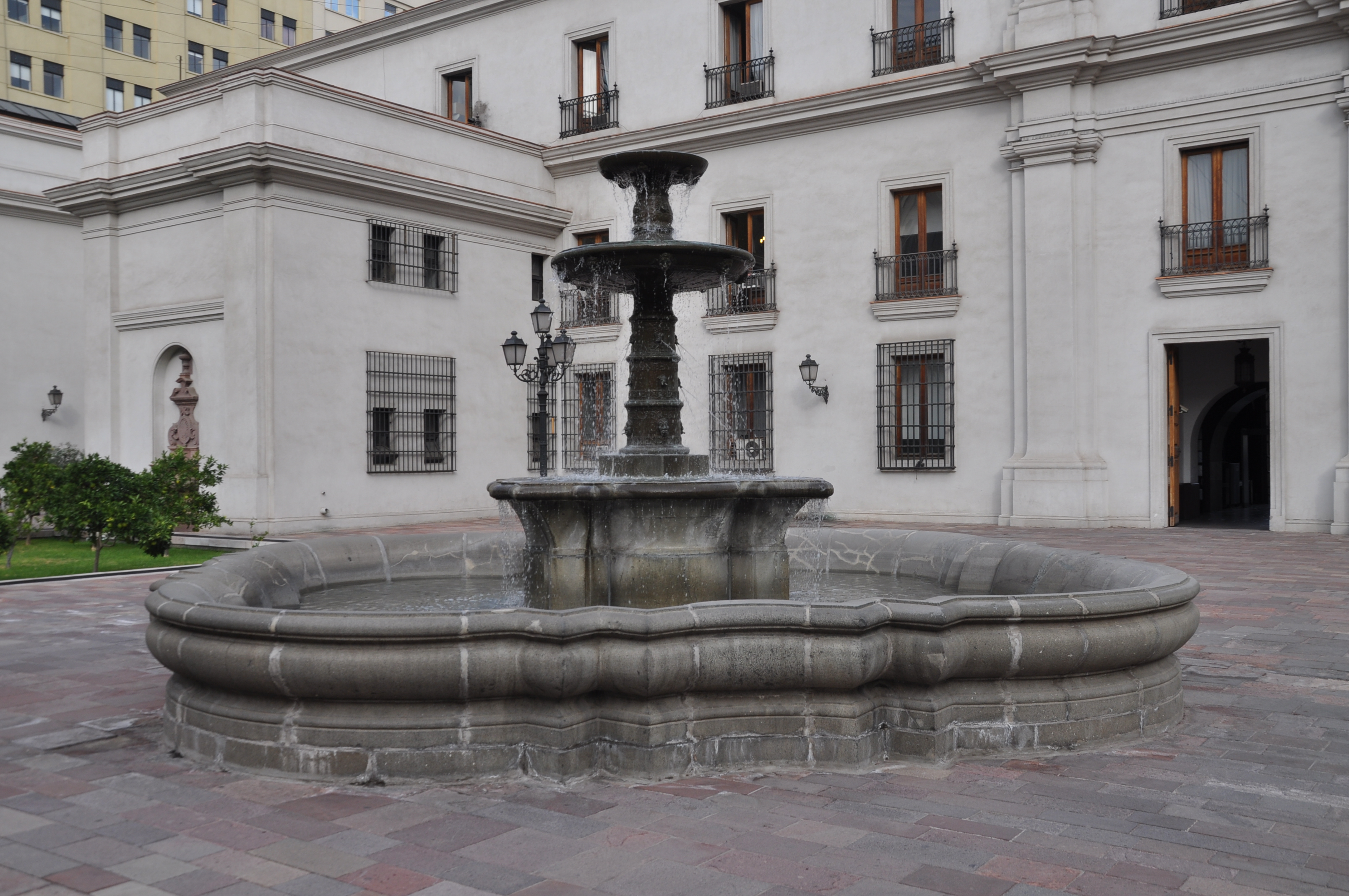
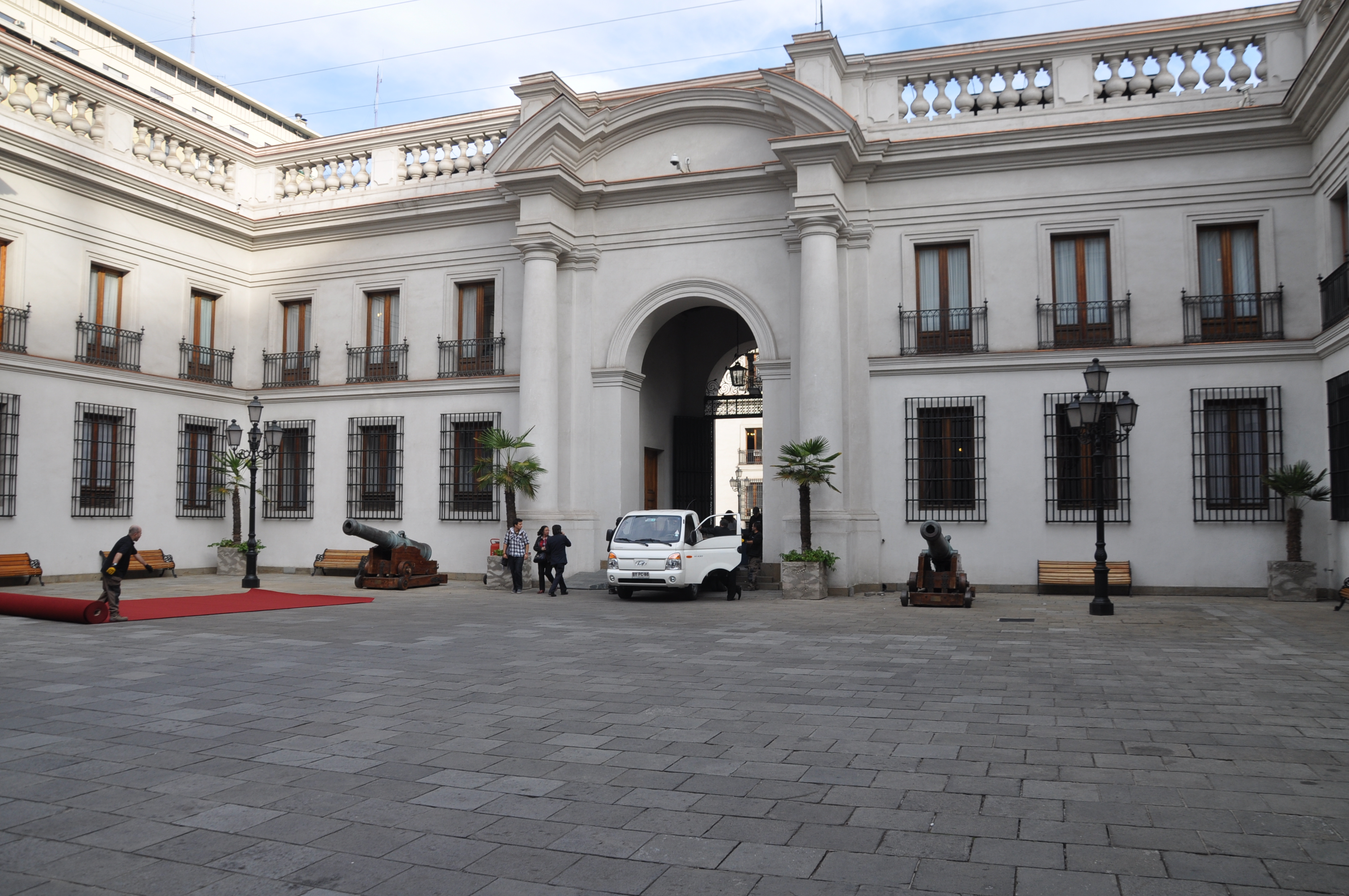
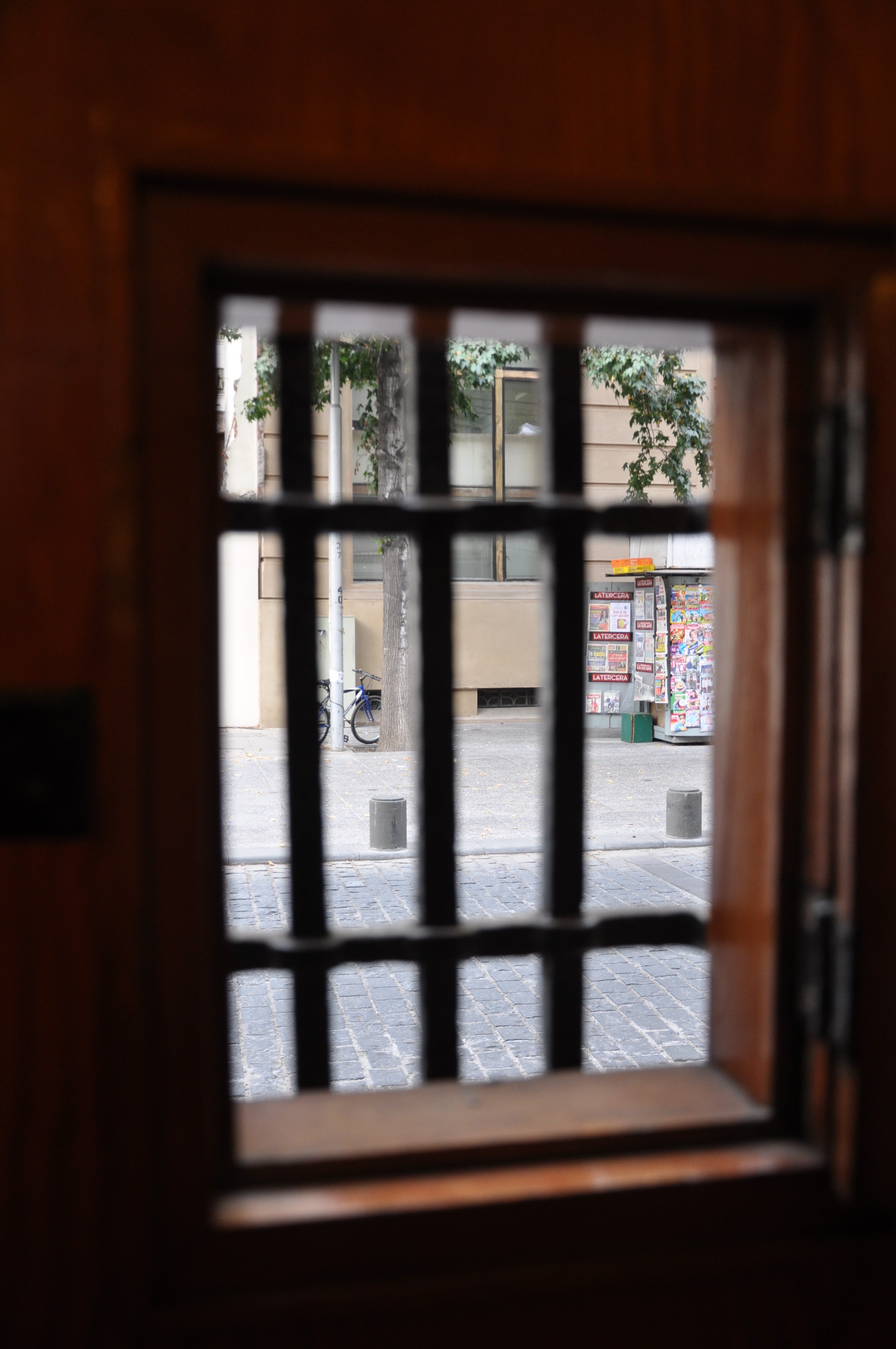
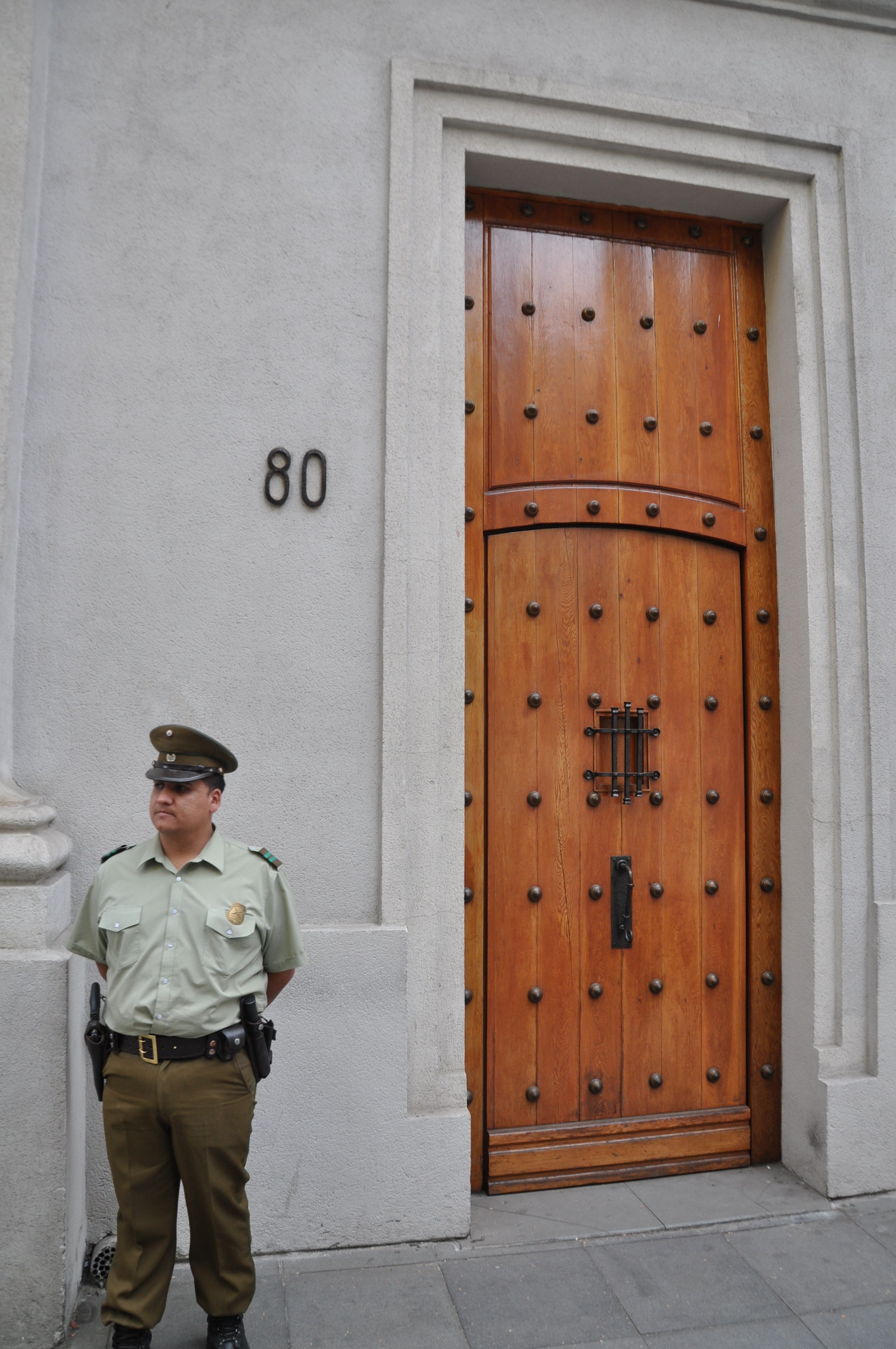
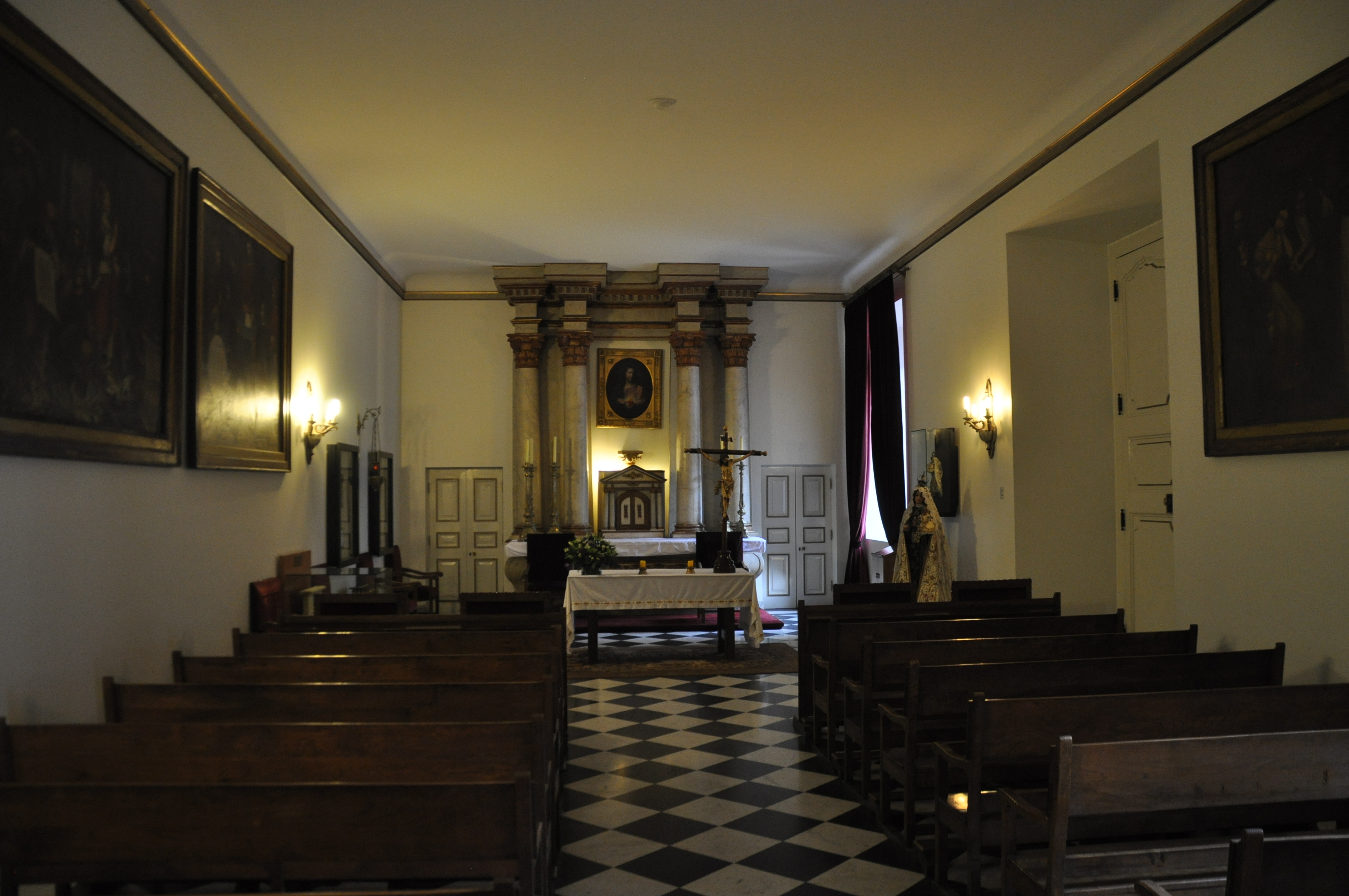
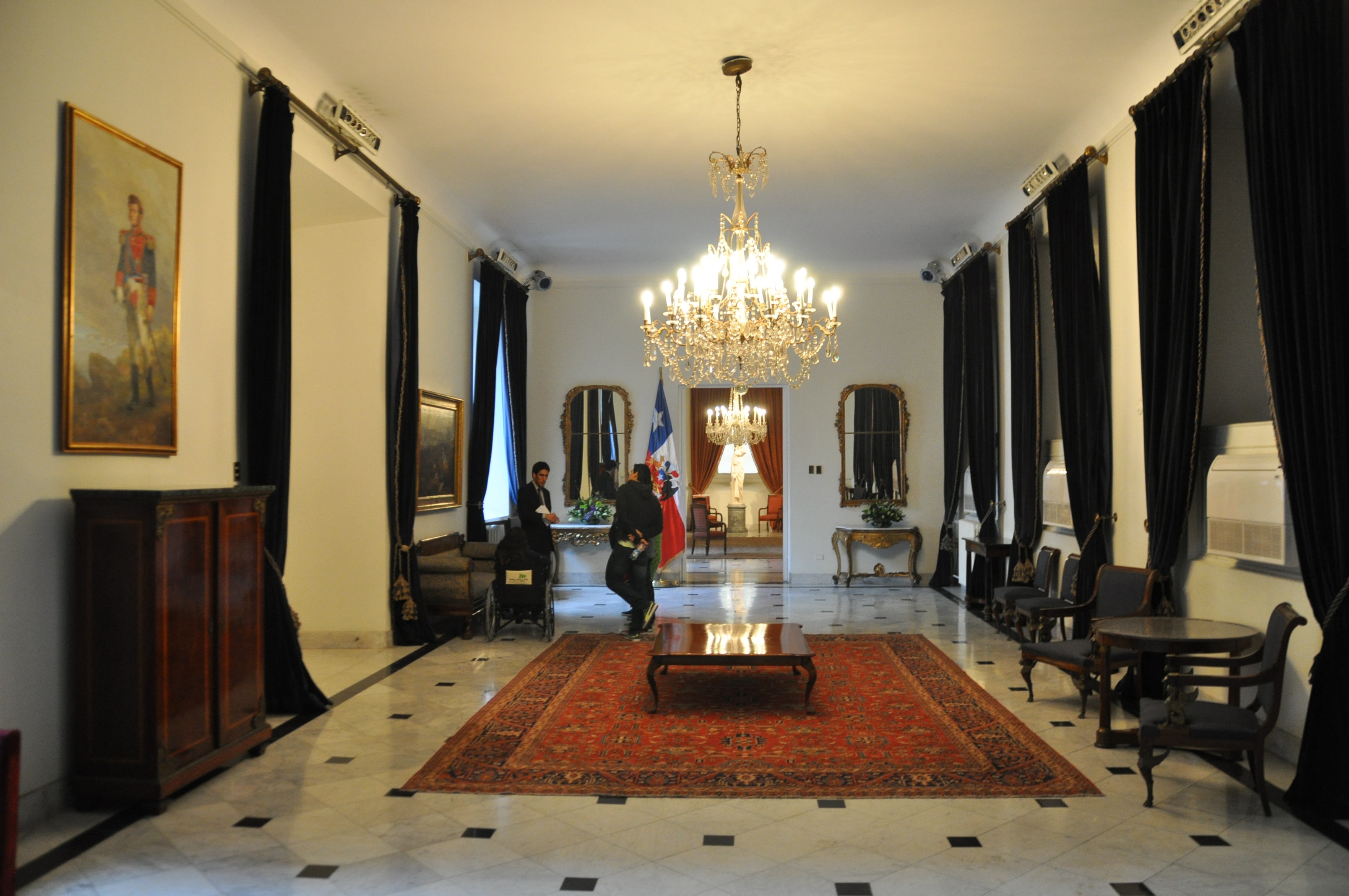
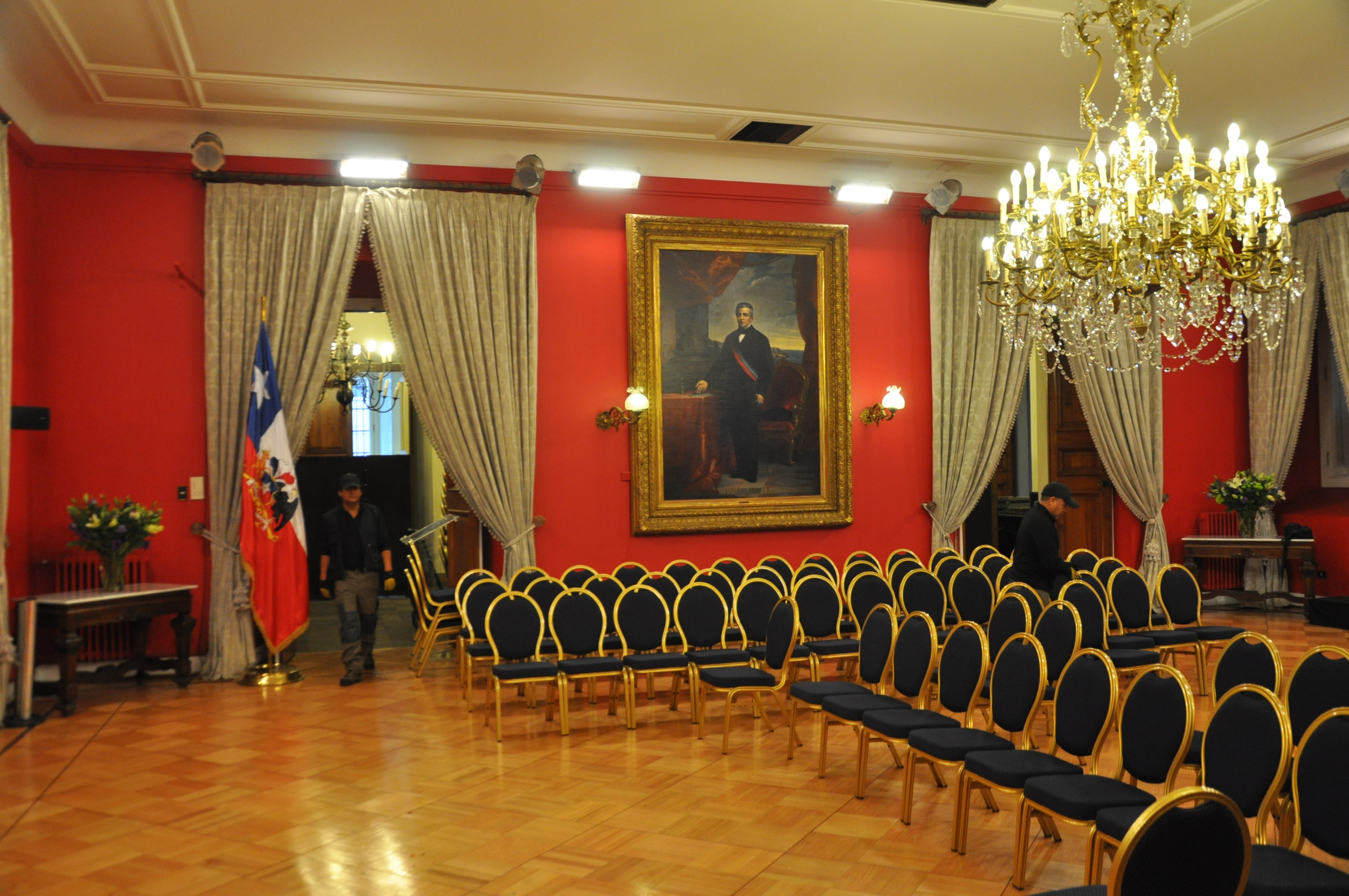
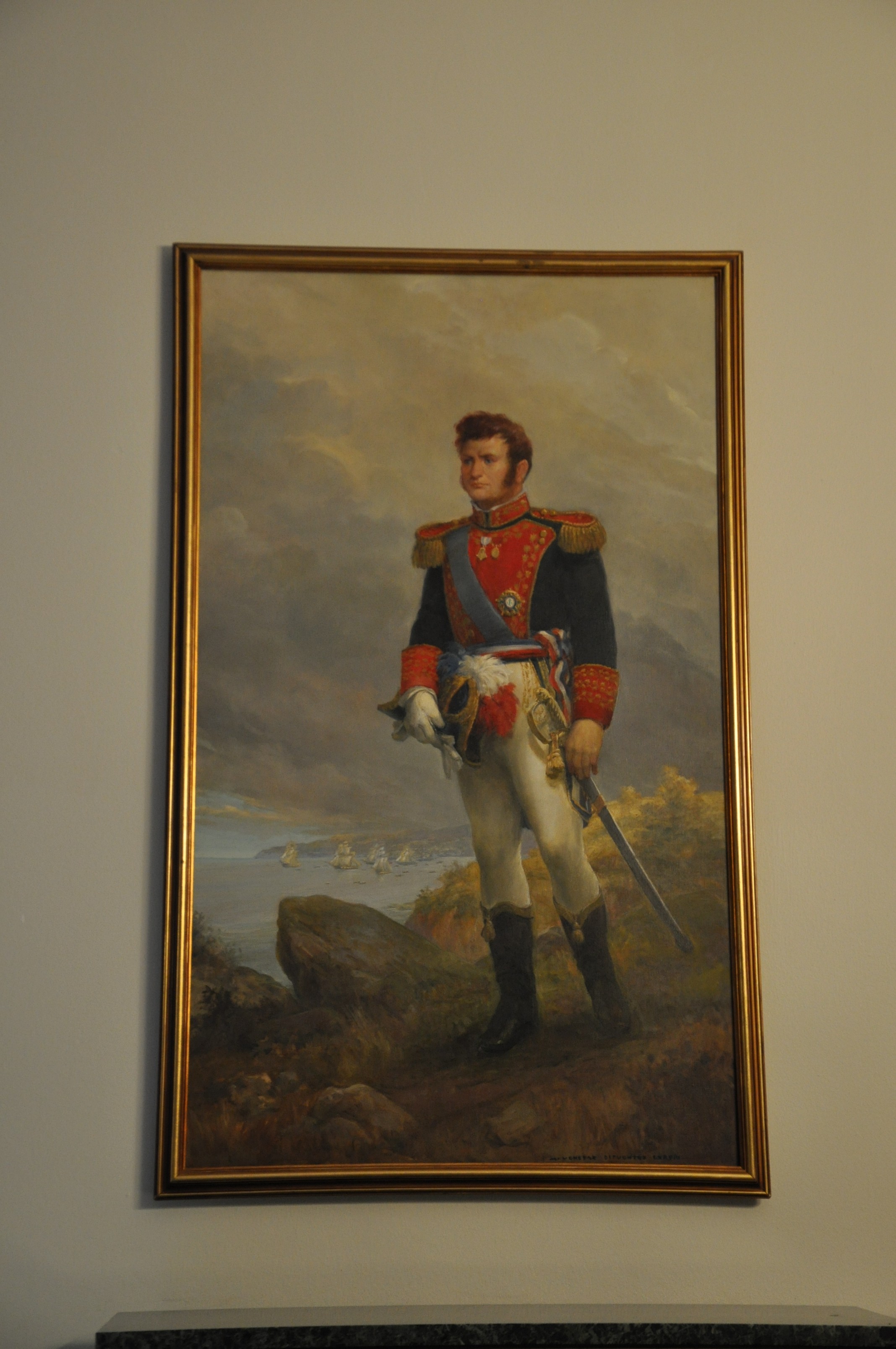
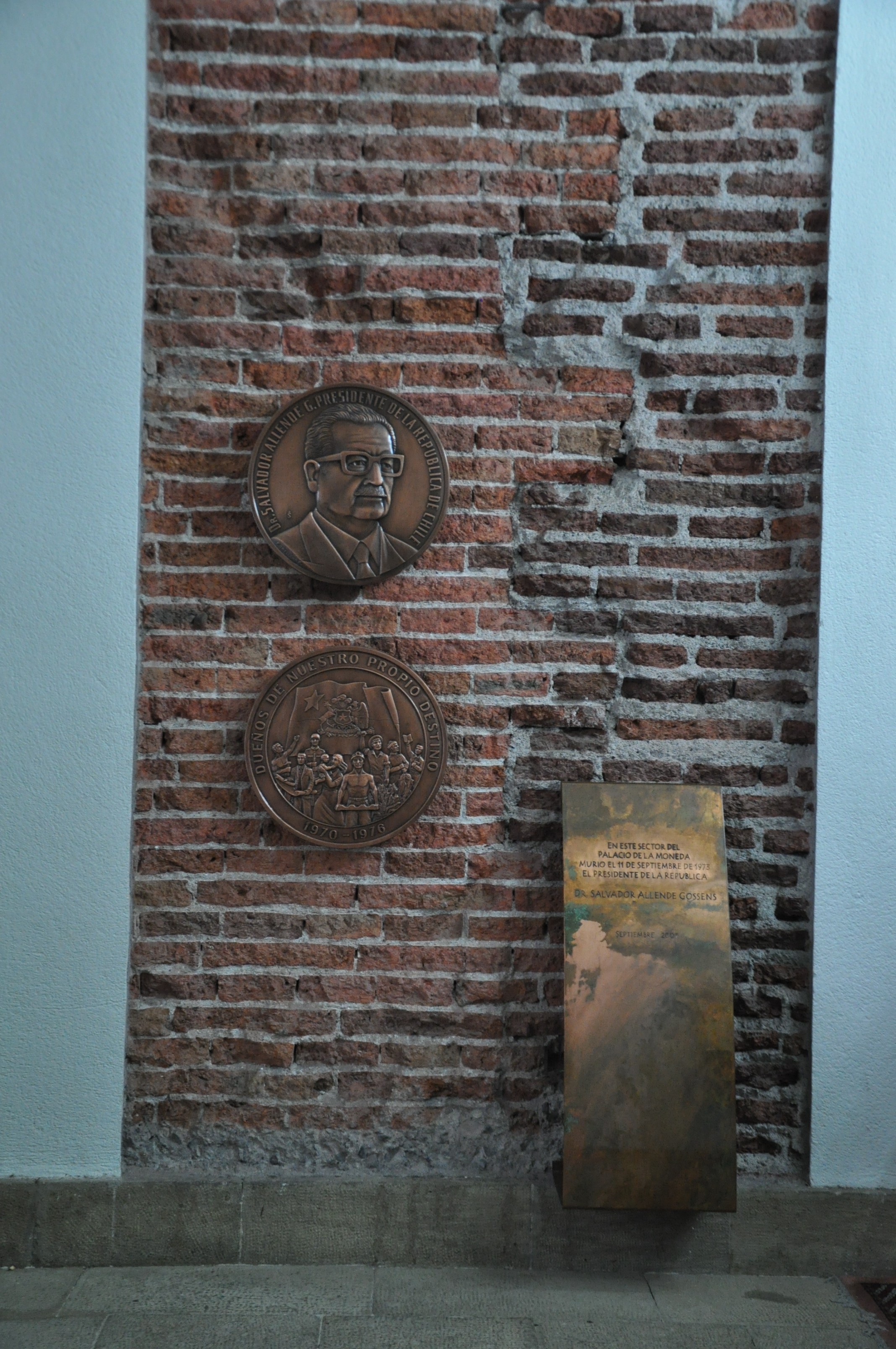
Last Speech of Salvador Allende from Palacio de la Moneda transmitted by Phone and Radio on September 11th 1973:
